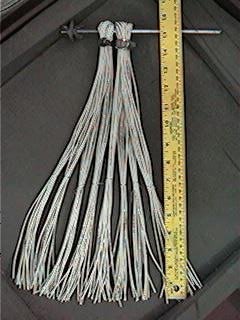
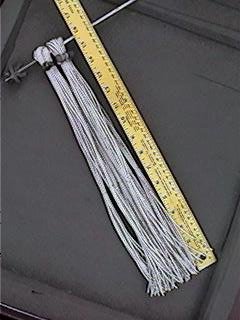
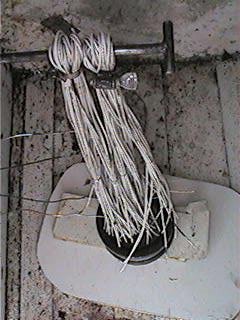
Test were conducted at The Memphis Groups facilities in Greenwood Mississippi 29 April-12 May 2000. Under a Improved Airliner Safety Program (IASP), sponsored by the Secretary of the Navy's Office of Safety and Survivability's, Aircraft Wiring and Inert Gas Generator Working Group (AWIGG). Electrical polyimide wire fires were induced in the EE Bay and aircraft galley along with wires suspended over class B fuel pans. Test were supervised and data collected by the NAVAL RESEARCH LABORATORY under the direction of Dr. Frederick W. Williams, NRL Code 6180.
Why is Pyrogen better than an Inert Gas Generator?
Pyrogen chemically extinguishes fires, holds down reignition
"NOT JUST BLOW THEM OUT MECHANICALLY"
A 20 ga aircraft wire bundle was removed form the test aircraft
interior. 128 each of these were tied into a typical harness and burned
in the vertical position to reproduce the worse case electrical fire. These
were suspended over a 200 mm cup of Class B fuel to simulate a fuel leak
soaking into a wire bundle. Six additional 25 mm class B cups were placed
throughout the EE Bay and Radar Bay to insure total flooding of the entire
compartment.



Pyrogen Generators were placed throughout the EE bay providing total coverage through the lower lobe forward of the forward cargo bay bulkhead to the nose radome below the cockpit floor (aprox 15 cubic meters). Generators were place so the discharge was pointing away from the fires and only the chemical extinguishment of the aerosol was used to control the fires.
- Unlike today's Inert Gas Generators used in military applications, in this test series the mechanical interaction of the pyrogen generator discharge ( blowing out the fire) and replacing the atmosphere with nitrogen was specifically not used. Oxygen content inside the EE Bay remained at pre burn concentrations (constant above 19%) after the pyrogen discharge. Data test 1, Data test 2, Gas Analysis Test 1
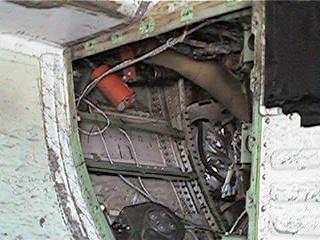
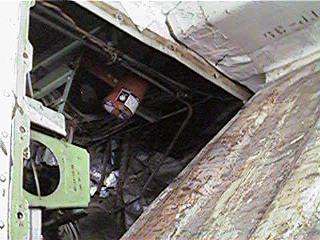 .
.
Pyrogen aerosol in suspension in the ee bay 15 minutes after discharge. Air Stairs cover has just been removed. The aerosol cloud is still in the ee bay providing fire suppression
Both EE Bay and Galley fires we tested.
In the Galley Test
Series, an aft galley was removed from another aircraft. The wire bundle
and 200 mm fuel cup were placed in the bottom floor of the galley, a single
Pyrogen generator was placed in the upper portion of the galley test fixture.
A viewing window was fabricated in the upper storage door to observe the
test. The wire bundle was splashed with Jet A and the class B cups ignited.
After a 60 second pre burn to insure total involvement of the wire insulation,
the doors were closed and the pyrogen discharged. Type K thermal couples
monitored the status of four additional fuel cups placed an different levels
in the enclosure. All the fires were extinguished immediately. The internal
temperature of the wire bundle remained at 400C at discharge. This is
well above the ignition temp of the fuel, as the aerosol removed the stored
heat from the wire bundle. Red embers and charcoal were observed on the
wires, but no reignition occurred. Again the discharge of the
generator was directed away from the fuel cups to insure no mechanical
interaction with the fires occurred.
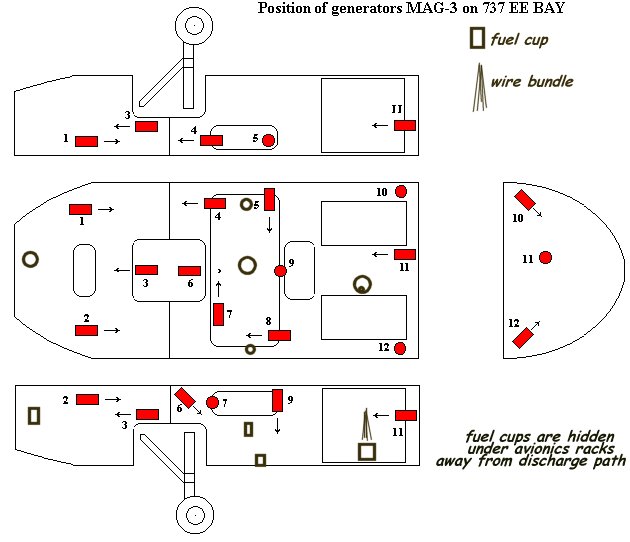
Learn more about other industries from the below links
down load a copy of the EE bay test report here
fire protection systems , Halon replacement , fire Suppression , fire suppression systems , fire extinguishers , fire science, flame management, US EPA, SNAP, ISO, ICAO, FAA US DOT, NFPA, SAE, FM, NIST, ATA, UL, SSL, AS/NZS, ODP , GWP , Pyrogen , PYROGEN , Airline Cargo conversions , Class A fire , Class B fire , Class C fire , EMAA, Encapsulated Micron Aerosol Agent, FAR 25. Aircraft Cargo Fires, Telecommunications fires , Transportation fires , Petrol chemical fires , Fire detection, Automobile Fire , Truck fires , Train fires , Building fires , Structural fires , petroleum fires , engine fires , marine fires , cargo fires , wood fires , Halon flooding , UL 1058, aircraft fire protection , aircraft crash , airline cargo fire , airline fire protection , FAA Technical center , Oil rig fires , gas rig fires , vehicle fires , electrical fire suppression , computer room fires , ship fires , machinery fires , merchant vessel fires , train fires , generator fires , battery fires , Wheel fires , brake fires , tire fires , car fires , home fires , Loss productivity , boeing fire test , 737 fire test , NRL , Naval Research Laboratory , Naval air systems command , NASC , NAVAIR , AS/NZS 4487:1997 , Joint strike fighter , JSF, HARC , NTSB , Transport canada , NIST , FAA Technical Center , Thermal Acoustic Insulation Blankets , IMO , International Maritime commission , USCG , United states coast guard , MCA , Pyrogen Ltd. Pyrogen Corp. Sdn. Bhd. , IAFC , IFPA ,